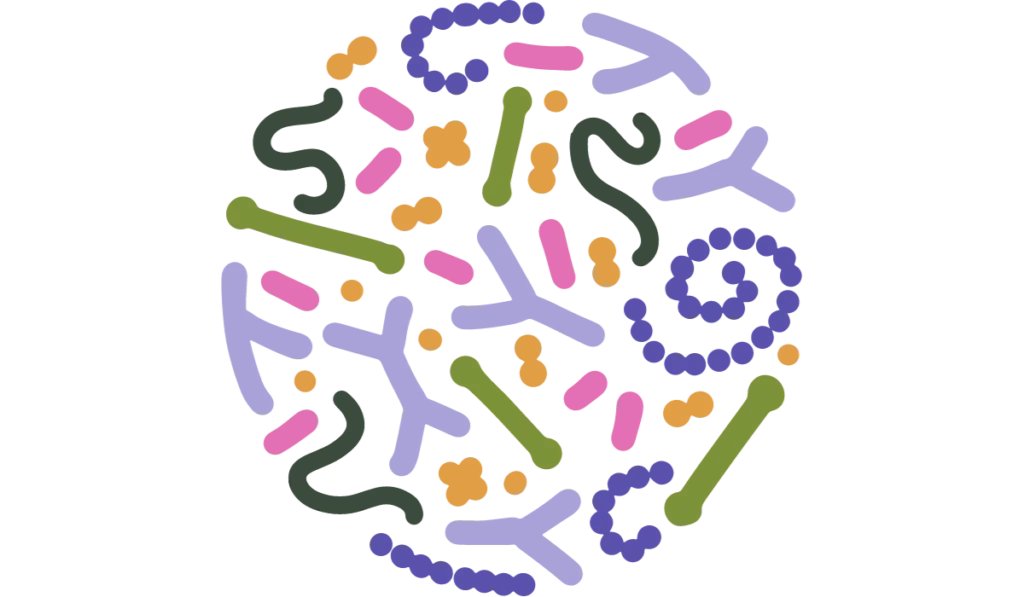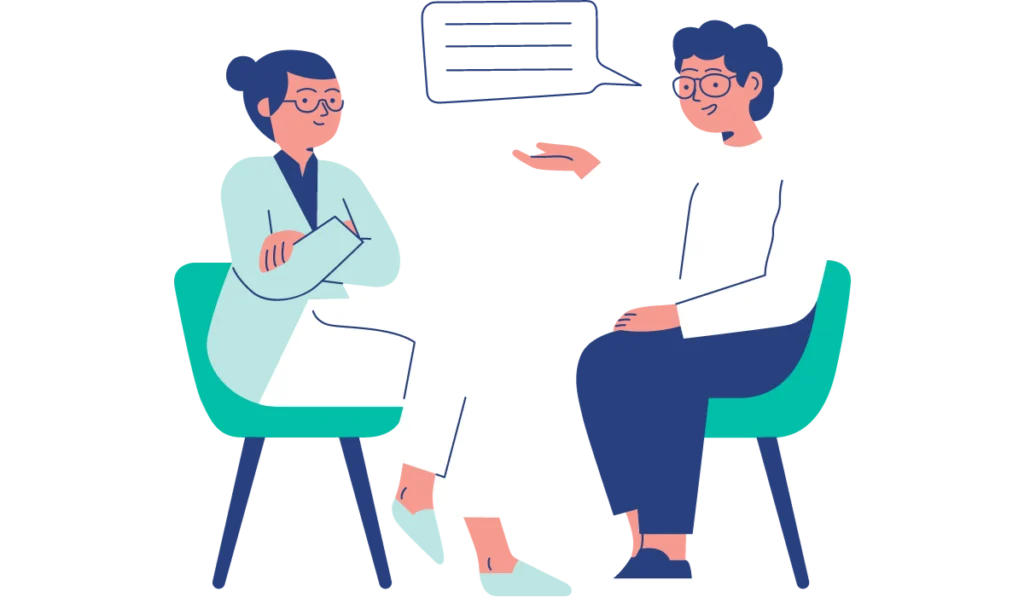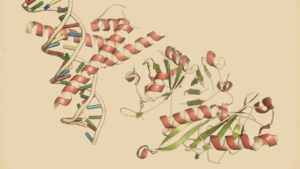IBS Treatment Breakthroughs: Beyond the Basics
Explore cutting-edge IBS treatments and discover effective solutions for managing Irritable Bowel Syndrome symptoms. Improve your quality of life.

Multiple drug classes, including 5-HT3 antagonists, TCAs, SSRIs, gabapentinoids, CRF-1 antagonists, β3 adrenoceptor agonists, somatostatin, N-methyl D-aspartate receptor antagonists, and melatonin, alleviate IBS symptoms.
Nevertheless, research is underway to identify fresh molecular targets for future IBS treatments.
Key Points
- Diverse Drug Classes: The article highlights the range of drug classes currently used to treat IBS, including 5-HT3 antagonists, TCAs, SSRIs, and more, demonstrating the complexity of IBS management.
- Serotonin Receptors: Serotonin receptors, particularly 5-HT3 and 5-HT4 receptors, play a central role in IBS treatment. Novel drugs targeting these receptors offer promise for improving symptoms in IBS patients.
- Multifaceted Treatment: Effective IBS treatment may involve a combination of centrally acting therapies, stress coping strategies, and psychotropic agents to address the diverse symptoms and underlying mechanisms of the condition.
- Emerging Molecular Targets: The article explores emerging molecular targets like benzodiazepine receptors, neurokinin receptors, brain-derived neurotrophic factor (BDNF), sex steroid receptors, and toll-like receptors (TLRs), indicating a growing understanding of IBS pathophysiology.
- Individualized Approach: The future of IBS treatment may involve personalized strategies based on the specific molecular targets and symptoms of each patient, offering hope for more effective and tailored therapies.
In This Article:
Introduction
In the realm of irritable bowel syndrome (IBS) management, innovation, and progress are paramount.
While conventional approaches have provided relief for many, the search for IBS treatment breakthroughs that go "Beyond the Basics" continues.
In this exploration, we delve into the evolving landscape of IBS therapeutics, where pioneering solutions promise hope and a better quality of life for those affected by this common gastrointestinal disorder.
Join us on a journey to uncover the latest advancements and discover what lies beyond the traditional methods of IBS treatment.
Unlocking the Power of Serotonin: Treating Irritable Bowel Syndrome (IBS)
Serotonin Receptors: The Key to IBS Treatment
Serotonin, also known as 5-HT, is a vital neurotransmitter and signaling molecule in our bodies, influencing our sensations, secretions, and absorptions.
It's a crucial player in both the brain and gut functions. This neurotransmitter has caught the attention of researchers for its significant role in Irritable Bowel Syndrome (IBS) A Trusted Source Garvin, B., and Wiley, J. W. (2008). The role of serotonin in irritable bowel syndrome: implications for management. Curr. Gastroenterol. Rep. 10, 363–368. Pubmed Abstract | Pubmed Full Text | CrossRef Full Text .
Diverse Serotonin Activity in IBS

Studies have revealed intriguing insights into how serotonin behaves differently in various forms of IBS.
In IBS-D (diarrhea-predominant) and PI-IBS, there's an increase in plasma 5-HT, while IBS-C (constipation-predominant) shows reduced levels.
Furthermore, the serotonin transporter protein (SERT) exhibits changes in both plasma and tissue levels in IBS A Trusted Source Camilleri, M. (2011). LX-1031, a tryptophan 5-hydroxylase inhibitor, and its potential in chronic diarrhea associated with increased serotonin. Neurogastroenterol. Motil. 23, 193–200. Pubmed Abstract | Pubmed Full Text | CrossRef Full Text .
Targeting Serotonin for Treatment
Researchers have explored drugs that specifically modulate serotonin activity (such as SSRIs, 5-HT3, and 5-HT4 receptor antagonists) or both serotonin and norepinephrine (NE) systems (like serotonin-norepinephrine reuptake inhibitors, SNRIs, and tricyclic antidepressants, TCAs) for treating IBS and other chronic pain conditions.
These medications have shown promise in managing functional GI disorders and psychiatric syndromes A Trusted Source Gershon, M. D., and Tack, J. (2007). The serotonin signaling system: from basic understanding to drug development for functional GI disorders. Gastroenterology 132, 397–414. Pubmed Abstract | Pubmed Full Text | CrossRef Full Text .
5-HT3 Receptor Antagonists: An Effective IBS-D Treatment
Clinical trials have identified serotonin receptor 5-HT3R antagonists, like alosetron, cilansetron, and ramosetron, as highly effective IBS treatments for both male and female IBS-D patients A Trusted Source Jarcho, J. M., Chang, L., Berman, M., Suyenobu, B., Naliboff, B. D., Lieberman, M. D., Ameen, V. Z., Mandelkern, M. A., and Mayer, E. A. (2008). Neural and psychological predictors of treatment response in irritable bowel syndrome patients with a 5-HT3 receptor antagonist: a pilot study. Aliment. Pharmacol. Ther. 28, 344–352. Pubmed Abstract | Pubmed Full Text | CrossRef Full Text .
These antagonists alleviate specific IBS symptoms such as frequent bowel movements and chronic abdominal pain by interacting with various neurotransmitters and reducing emotional arousal circuit activity A Trusted Source Berman, S. M., Chang, L., Suyenobu, B., Derbyshire, S. W., Stains, J., Fitzgerald, L., Mandelkern, M., Hamm, L., Vogt, B., Naliboff, B. D., and Mayer, E. A. (2002). Condition-specific deactivation of brain regions by 5-HT3 receptor antagonist alosetron. Gastroenterology 123, 969–977. Pubmed Abstract | Pubmed Full Text | CrossRef Full Text .
Risk Management in 5-HT3 Antagonist Therapies
While 5-HT3 antagonist-based therapies have proven effective, they come with potential risks, including ischemic colitis and constipation complications A Trusted Source Chang, L., Tong, K., and Ameen, V. (2010). Ischemic colitis and complications of constipation associated with the use of alosetron under a risk management plan: clinical characteristics, outcomes, and incidences. Am. J. Gastroenterol. 105, 866–875. Pubmed Abstract | Pubmed Full Text | CrossRef Full Text .
Novel compounds like LX-1031 are in development, aiming to inhibit 5-HT synthesis directly in EC cells, providing an alternative to traditional 5-HT3 receptor antagonists for IBS-D treatment.
Exploring New Serotonin Receptors
Recent research has turned its focus to partial 5-HT1 receptor agonists and antagonists, such as buspirone and AZD7371.
While they initially showed promise in animal models for relieving visceral pain, clinical development of AZD7371 was discontinued due to adverse effects A Trusted Source Drossman, D. A., Danilewitz, M., Naesdal, J., Hwang, C., Adler, J., and Silberg, D. G. (2008). Randomized, double-blind, placebo-controlled trial of the 5-HT1A receptor antagonist AZD7371 tartrate monohydrate (robalzotan tartrate monohydrate) in patients with irritable bowel syndrome. Am. J. Gastroenterol. 103, 2562–2569. Pubmed Abstract | Pubmed Full Text | CrossRef Full Text .
5-HT4 Receptors: A Promising Avenue
Enteric neurons and smooth muscle cells in the GI tract host 5-HT4 receptors, and stimulating them leads to acetylcholine release and prokinetic effects.
Earlier generation 5-HT4 receptor agonists like cisapride and tegaserod were withdrawn due to cardiac issues, but newer agents appear to be safer for IBS-C patients A Trusted Source Manini, M. L., Camilleri, M., Goldberg, M., Sweetser, S., McKinzie, S., Burton, D., Wong, S., Kitt, M. M., Li, Y. P., and Zinsmeister, A. R. (2010). Effects of Velusetrag (TD-5108) on gastrointestinal transit and bowel function in health and pharmacokinetics in health and constipation. Neurogastroenterol. Motil. 22, 42–48. Pubmed Abstract | Pubmed Full Text .
The Potential of 5-HT7 and 5-HT2B Receptors
The 5-HT7 receptors, known for their roles in regulating smooth muscle relaxation, nociceptive pathways, and mood, are gaining attention as potential targets for IBS treatment A Trusted Source Vanhoenacker, P., Haegeman, G., and Leysen, J. E. (2000). 5-HT7 receptors: current knowledge and future prospects. Trends Pharmacol. Sci. 21, 70–77. Pubmed Abstract | Pubmed Full Text | CrossRef Full Text . Additionally, blocking 5-HT2B receptors has shown promise in reducing pain behaviors A Trusted Source O’Mahony, S. M., Bulmer, D. C., Coelho, A. M., Fitzgerald, P., Bongiovanni, C., Lee, K., Winchester, W., Dinan, T. G., and Cryan, J. F. (2010a). 5-HT(2B) receptors modulate visceral hypersensitivity in a stress-sensitive animal model of brain-gut axis dysfunction. Neurogastroenterol. Motil. 22, 573–578, e124. CrossRef Full Text.
Serotonin and CRF Interaction
Recent studies have uncovered a significant interaction between serotonin and CRF (Corticotropin-Releasing Factor).
Low doses of CRF have been found to influence serotonergic neurons in various brain regions, affecting serotonin release and potentially influencing mood and IBS A Trusted Source Valentino, R. J., and Commons, K. G. (2005). Peptides that fine-tune the serotonin system. Neuropeptides 39, 1–8. Pubmed Abstract | Pubmed Full Text | CrossRef Full Text .
As researchers continue to unravel the complex interplay of serotonin receptors in IBS, new treatment avenues are emerging. Understanding these receptors holds the key to more effective therapies for this challenging condition.
Unlocking IBS Relief: Targeting Benzodiazepine Receptors
Researchers are exploring a new class of drugs, benzodiazepine (BZD) receptor modulators, for treating visceral pain.
These receptors, found in various body regions, control autonomic functions and influence gut activity.
Central BZD receptors impact GABA interaction, affecting the autonomic nervous system (ANS), while peripheral BZD receptors on immune cells play a role in cell proliferation and immunomodulation.
These receptors, part of a complex network involving the central nervous system, behavior, and immune response, hold promise for future IBS treatments.
Dextofisopam, a novel BZD receptor ligand, is currently under investigation for managing IBS-D A Trusted Source Grundmann, O., Yoon, S. L., and Moshiree, B. (2010). Current developments for the diagnosis and treatment of irritable bowel syndrome. Curr. Pharm. Des. 16, 3638–3645. Pubmed Abstract | Pubmed Full Text | CrossRef Full Text .
Cracking the Code of IBS Pain: Neurokinin Receptors Hold the Key

Substance P (SP) and neurokinin-1 receptors (NK1R) are scattered across the body, from peripheral to brain regions linked to emotions and autonomic functions A Trusted Source Tillisch, K., Labus, J., Nam, B., Bueller, J., Smith, S., Suyenobu, B., Siffert, J., McKelvy, J., Naliboff, B., and Mayer, E. (2012). Neurokinin-1-receptor antagonism decreases anxiety and emotional arousal circuit response to noxious visceral distension in women with irritable bowel syndrome: a pilot study. Aliment. Pharmacol. Ther. 35, 360–367. Pubmed Abstract | Pubmed Full Text | CrossRef Full Text .
They play a vital role in pain responses and reactions to stress in both animals and humans.
A recent study by Tillisch et al. (2012) showed that a 3-week treatment with an NK1R antagonist reduced pain-induced negative feelings and anxiety in female IBS patients A Trusted Source Tillisch, K., Labus, J., Nam, B., Bueller, J., Smith, S., Suyenobu, B., Siffert, J., McKelvy, J., Naliboff, B., and Mayer, E. (2012). Neurokinin-1-receptor antagonism decreases anxiety and emotional arousal circuit response to noxious visceral distension in women with irritable bowel syndrome: a pilot study. Aliment. Pharmacol. Ther. 35, 360–367. Pubmed Abstract | Pubmed Full Text | CrossRef Full Text .
This suggests that NK1R antagonists may be a promising option to alleviate distress in IBS patients.
Unlocking the IBS Puzzle: Brain-Derived Neurotrophic Factor (BDNF)
Neurotrophins, like brain-derived neurotrophic factor (BDNF), are essential for neuronal survival and the formation of new neurons and synapses.
Recent research by Yu et al. (2012) revealed a notable increase in BDNF levels in the colonic mucosa of IBS patients, particularly those experiencing abdominal pain A Trusted Source Yu, Y. B., Zuo, X. L., Zhao, Q. J., Chen, F. X., Yang, J., Dong, Y. Y., Wang, P., and Li, Y.-Q. (2012). Brain-derived neurotrophic factor contributes to abdominal pain in irritable bowel syndrome. Gut 61, 685–694. Pubmed Abstract | Pubmed Full Text | CrossRef Full Text .
This suggests that BDNF, released due to inflammation, contributes to central sensitization and altered gut sensations in IBS.
Additionally, elevated BDNF may impact the structural changes in mucosal nerve fibers seen in IBS. Inhibiting the BDNF system holds promise as a potential strategy for alleviating IBS symptoms.
Decoding the Role of Sex Steroid Receptors in IBS
Unraveling the Gender Mystery
With the predominance of females among IBS patients and sex-related differences in symptom perception, researchers have delved into the impact of sex steroids, particularly ovarian hormones, on IBS development.
Studies have shown that women with IBS often experience worsened symptoms, and heightened visceral and somatic sensitivity, during menstruation A Trusted Source Gustafsson, J. K., and Greenwood-Van, M. B. (2011). Amygdala activation by corticosterone alters visceral and somatic pain in cycling female rats. Am. J. Physiol. Gastrointest. Liver Physiol. 300, G1080–G1085. Pubmed Abstract | Pubmed Full Text | CrossRef Full Text .
They also exhibit greater activation in brain areas associated with emotional responses, like the amygdala and cingulate cortex, compared to men A Trusted Source Naliboff, B. D., Berman, S., Chang, L., Derbyshire, S. W., Suyenobu, B., Vogt, B. A., Mandelkern, M., and Mayer, E. A. (2003). Sex-related differences in IBS patients: central processing of visceral stimuli. Gastroenterology 124, 1738–1747. Pubmed Abstract | Pubmed Full Text | CrossRef Full Text .
On the other hand, male IBS patients display less visceral hypersensitivity but have increased sympathetic nervous system responses and decreased cardiovagal activity compared to females A Trusted Source Tillisch, K., Mayer, E. A., Labus, J. S., Stains, J., Chang, L., and Naliboff, B. D. (2005). Sex specific alterations in autonomic function among patients with irritable bowel syndrome. Gut 54, 1396–1401. Pubmed Abstract | Pubmed Full Text | CrossRef Full Text .
Unveiling Hormonal Complexity

While ovarian steroid receptor levels are higher in some female brain regions A Trusted Source Milner, T. A., Lubbers, L. S., Alves, S. E., and McEwen, B. S. (2008). Nuclear and extranuclear estrogen binding sites in the rat forebrain and autonomic medullary areas. Endocrinology 149, 3306–3312. Pubmed Abstract | Pubmed Full Text | CrossRef Full Text , progesterone and estradiol-induced visceral hypersensitivity isn't exclusive to one sex.
Males also exhibit increased visceral sensitivity when hormones are implanted in the amygdala A Trusted Source Myers, B., Schulkin, J., and Greenwood-Van, M. B. (2011). Sex steroids localized to the amygdala increase pain responses to visceral stimulation in rats. J. Pain. 12, 486–494. Pubmed Abstract | Pubmed Full Text | CrossRef Full Text .
Nonetheless, the amygdala appears to be a crucial supraspinal site mediating the influence of ovarian hormones on visceral pain in both sexes, contributing to symptom differences in male and female IBS patients A Trusted Source Kilpatrick, L. A., Ornitz, E., Ibrahimovic, H., Treanor, M., Craske, M., Nazarian, M., Kilpatrick, L. A., Ornitz, E., Ibrahimovic, H., Treanor, M., Craske, M., Nazarian, M., Labus, J. S., Mayer, E. A., and Naliboff, B. D. (2010). Sex-related differences in prepulse inhibition of startle in irritable bowel syndrome (IBS). Biol. Psychol. 84, 272–278. Pubmed Abstract | Pubmed Full Text | CrossRef Full Text .
The Amygdala as a Target
Understanding the role of sex steroid receptors, particularly in the amygdala, could hold the key to developing effective IBS treatments that alleviate pain in both male and female patients.
Toll-Like Receptors: Unveiling IBS Triggers
Guardians of the Gut
Toll-like receptors (TLRs) found on mucosal surfaces, including the colon, play a pivotal role in IBS.
Their expression increases in both rat models of visceral hypersensitivity and mucosal biopsies from IBS patients A Trusted Source McKernan, D. P., Gaszner, G., Quigley, E. M., Cryan, J. F., and Dinan, T. G. (2011). Altered peripheral toll-like receptor responses in the irritable bowel syndrome. Aliment. Pharmacol. Ther. 33, 1045–1052. Pubmed Abstract | Pubmed Full Text | CrossRef Full Text A Trusted Source Brint, E. K., MacSharry, J., Fanning, A., Shanahan, F., and Quigley, E. M. (2011). Differential expression of toll-like receptors in patients with irritable bowel syndrome. Am. J. Gastroenterol. 106, 329–336. Pubmed Abstract | Pubmed Full Text | CrossRef Full Text .
These receptors react to bacterial and viral components, triggering the production of inflammatory cytokines like IL-1b, IL-6, and TNFa.
This process affects spinal cord transmission, leading to central sensitization and hyperalgesia A Trusted Source Arebi, N., Gurmany, S., Bullas, D., Hobson, A., Stagg, A., and Kamm, M. (2008). Review article: the psychoneuroimmunology of irritable bowel syndrome – an exploration of interactions between psychological, neurological and immunological observations. Aliment. Pharmacol. Ther. 28, 830–840. Pubmed Abstract | Pubmed Full Text | CrossRef Full Text .
The Cytokine Connection
Cytokines, unleashed by TLR activation, influence not only the spinal cord but also cross the blood-brain barrier.
They impact the HPA axis, stress responses, and stimulate CRH secretion A Trusted Source Dantzer, R., O’Connor, J. C., Freund, G. G., Johnson, R. W., and Kelley, K. W. (2008). From inflammation to sickness and depression: when the immune system subjugates the brain. Nat. Rev. Neurosci. 9, 46–56. Pubmed Abstract | Pubmed Full Text | CrossRef Full Text .
A study by McKernan et al. (2011) found that IBS patients exhibit enhanced cytokine and cortisol release when exposed to TLR agonists, suggesting that targeting TLRs might hold promise in IBS treatment A Trusted Source McKernan, D. P., Gaszner, G., Quigley, E. M., Cryan, J. F., and Dinan, T. G. (2011). Altered peripheral toll-like receptor responses in the irritable bowel syndrome. Aliment. Pharmacol. Ther. 33, 1045–1052. Pubmed Abstract | Pubmed Full Text | CrossRef Full Text .
Unveiling Receptors: A Balancing Act in IBS
Regulating Immunity and Symptoms
Increasing evidence highlights the roles of acetylcholine and catecholamines, such as dopamine and noradrenaline, in IBS.
These pathways seem to positively influence IBS symptoms by regulating immunity and cytokine production A Trusted Source Rosas-Ballina, M., and Tracey, K. J. (2009). The neurology of the immune system: neural reflexes regulate immunity. Neuron 64, 28–32. Pubmed Abstract | Pubmed Full Text | CrossRef Full Text .
Adrenaline's Complex Role
Adrenaline, however, acts both directly and indirectly on neurons, potentially exacerbating pain sensations A Trusted Source Ibeakanma, C., Ochoa-Cortes, F., Miranda-Morales, M., McDonald, T., Spreadbury, I., Cenac, N., Ibeakanma, C., Ochoa-Cortes, F., Miranda-Morales, M., McDonald, T., Spreadbury, I., Cenac, N., Cattaruzza, F., Hurlbut, D., Vanner, S., Bunnett, N., Vergnolle, N., and Vanner, S. (2011). Brain-gut interactions increase peripheral nociceptive signaling in mice with postinfectious irritable bowel syndrome. Gastroenterology 141, 2098–2108. Pubmed Abstract | Pubmed Full Text | CrossRef Full Text .
Interestingly, no significant differences were found in noradrenaline responses between women with IBS-D and healthy women A Trusted Source Chang, L., Sundaresh, S., Elliott, J., Anton, P. A., Baldi, P., Licudine, A., Mayer, M., Vuong, T., Hirano, M., Naliboff, B. D., Ameen, V. Z., and Mayer, E. A. (2009). Dysregulation of the hypothalamic-pituitary-adrenal (HPA) axis in irritable bowel syndrome. Neurogastroenterol. Motil. 21, 149–159. Pubmed Abstract | Pubmed Full Text | CrossRef Full Text .
Unraveling the Complexity
Conflicting results underline the need for further research into cholinergic, dopaminergic, and adrenergic receptors and their ligands in IBS development, offering potential avenues for therapy.
The Evolving Landscape of IBS Treatment: From Past to Future
Addressing Varied IBS Symptoms
For many with mild IBS, lifestyle and dietary adjustments suffice, while those with moderate symptoms may benefit from gut-targeted medications like anticholinergics and peripheral 5-HT agents.
However, severe IBS patients, experiencing heightened pain, compromised quality of life, and emotional challenges, often find little relief from conventional treatments A Trusted Source Grover, M., and Drossman, D. A. (2011). Centrally acting therapies for irritable bowel syndrome. Gastroenterol. Clin. North Am. 40, 183–206. Pubmed Abstract | Pubmed Full Text | CrossRef Full Text .
Here, the intricate brain-gut axis offers promising avenues for novel anti-IBS drugs.
The Central Role in Treatment
Centrally acting treatments, including stress management strategies and psychotropic agents, have demonstrated effectiveness in IBS symptom relief A Trusted Source Larauche, M., Mulak, A., and Tache, Y. (2012). Stress and visceral pain: from animal models to clinical therapies. Exp. Neurol. 233, 49–67. Pubmed Abstract | Pubmed Full Text | CrossRef Full Text .
Tricyclic antidepressants (TCAs), SSRIs, SNRIs, and benzodiazepines (BZDs) have all played roles in IBS management, primarily through mood stabilization, pain perception modulation, and GI function improvement A Trusted Source Ford, A. C., Talley, N. J., Schoenfeld, P. S., Quigley, E. M., and Moayyedi, P. (2009). Efficacy of antidepressants and psychological therapies in irritable bowel syndrome: systematic review and meta-analysis. Gut 58, 367–378. Pubmed Abstract | Pubmed Full Text | CrossRef Full Text .
However, their effects on bowel symptoms and visceral hypersensitivity are less consistent, and they come with side effects A Trusted Source Chey, W. D., Maneerattaporn, M., and Saad, R. (2011). Pharmacologic and complementary and alternative medicine therapies for irritable bowel syndrome. Gut Liver 5, 253–266. Pubmed Abstract | Pubmed Full Text | CrossRef Full Text .
The search for improved psychotropic agents continues.
Serotonergic Agents on the Horizon
Serotonergic agents hold promise as future IBS treatments.
Novel mixed 5-HT1A agonists/5-HT3 antagonists, 5-HT1B/D agonists, and 5-HT2B antagonists have emerged as potential therapeutics A Trusted Source Vera-Portocarrero, L. P., Ossipov, M. H., King, T., and Porreca, F. (2008). Reversal of inflammatory and noninflammatory visceral pain by central or peripheral actions of sumatriptan. Gastroenterology 135, 1369–1378. Pubmed Abstract | Pubmed Full Text | CrossRef Full Text .
Exploring New Targets
Other endogenous systems like GABA-B, CRF, NK, cannabinoid, and opioid receptors and their ligands are being investigated as potential IBS treatment targets.
Gabapentin, a GABA-ergic agent, shows promise in reducing central sensitization and hyperalgesia A Trusted Source Camilleri, M., and Andresen, V. (2009). Current and novel therapeutic options for irritable bowel syndrome management. Dig. Liver Dis. 41, 854–862. Pubmed Abstract | Pubmed Full Text | CrossRef Full Text .
CRF receptor antagonists are under consideration A Trusted Source Tache, Y., Kiank, C., and Stengel, A. (2009). A role for corticotropin-releasing factor in functional gastrointestinal disorders. Curr. Gastroenterol. Rep. 11, 270–277. Pubmed Abstract | Pubmed Full Text | CrossRef Full Text .
Cannabinoid and opioid receptor ligands are also explored as potential anti-IBS agents A Trusted Source Izzo, A. A., and Sharkey, K. A. (2010). Cannabinoids and the gut: new developments and emerging concepts. Pharmacol. Ther. 126, 21–38. Pubmed Abstract | Pubmed Full Text | CrossRef Full Text .
The landscape of IBS treatment is evolving, offering hope for improved symptom management and enhanced quality of life for patients.
Discussion
- Current Treatment Options: The discussion begins by highlighting the various classes of drugs currently used to treat Irritable Bowel Syndrome (IBS), including 5-HT3 antagonists, tricyclic antidepressants (TCAs), selective serotonin reuptake inhibitors (SSRIs), gabapentinoids, CRF-1 antagonists, β3 adrenoceptor agonists, somatostatin, N-methyl D-aspartate receptor antagonists, and melatonin.
- Serotonin Receptors: The discussion then focuses on serotonin receptors (5-HT) as potential molecular targets for IBS treatment. It highlights the altered serotonergic signaling observed in IBS patients and the use of drugs that modulate 5-HT activity, such as SSRIs and 5-HT3 receptor antagonists. The potential for new-generation drugs with similar profiles is mentioned.
- 5-HT3 Antagonists: The effectiveness of 5-HT3 receptor antagonists, such as alosetron, cilansetron, and ramosetron, in alleviating IBS symptoms is discussed. The mechanisms underlying their effectiveness and the need for a risk management plan due to potential side effects are highlighted.
- 5-HT4 Receptors: The discussion briefly touches on 5-HT4 receptors and their role in regulating motility and the potential for novel 5-HT4 agonists as safer treatments for IBS-C.
- 5-HT7 and 5-HT2B Receptors: The potential of targeting 5-HT7 and 5-HT2B receptors is discussed, emphasizing their role in GI dyskinesia, abdominal pain, and visceral paresthesia in IBS.
- CRF and Serotonergic System Interaction: The interaction between the serotonergic system and corticotropin-releasing factor (CRF) is mentioned as a consideration for future IBS therapies.
- Benzodiazepine Receptors: The discussion introduces benzodiazepine (BZD) receptor modulators as potential targets for IBS treatment, highlighting their role in controlling autonomic function and potential benefits for IBS-D patients.
- Neurokinin Receptors: The role of substance P (SP) and neurokinin-1 receptors (NK1R) in nociceptive responses and stress-related symptoms in IBS patients is discussed. The potential use of NK1R antagonists to reduce pain-induced distress is mentioned.
- Brain-Derived Neurotrophic Factor (BDNF): The discussion touches on the role of BDNF in IBS and its potential as a therapeutic target, especially considering its correlation with abdominal pain.
- Sex Steroid Receptors: The discussion highlights the influence of sex steroids, particularly ovarian hormones, on IBS symptoms and the potential role of the amygdala as a target for IBS treatment in both males and females.
- Toll-Like Receptors (TLRs): TLRs and their role in inflammation and central sensitization in IBS are discussed, suggesting them as possible targets for treatment.
- Receptors for Acetylcholine and Catecholamines: The discussion briefly mentions the involvement of cholinergic, dopaminergic, and adrenergic receptors in IBS and suggests the need for further research in this area.
Conclusion
- Current Treatment Challenges: The conclusion summarizes the challenges in treating IBS patients, especially those with severe symptoms, and emphasizes the need for novel pharmacological targets beyond traditional approaches.
- Central Acting Treatments: It underscores the potential benefits of centrally acting treatments, such as stress coping strategies and psychotropic agents, in IBS management and symptom relief.
- Serotonergic Agents: The conclusion mentions the promise of serotonergic agents, including novel ones, in the treatment of IBS, while acknowledging the need for more robust evidence.
- Other Endogenous Systems: The discussion highlights various other endogenous systems, including GABA-B, CRF, NK, cannabinoid, and opioid receptors, as potential targets for future IBS treatments.
- Individualized Treatment: The conclusion suggests that future IBS treatment may involve individualized approaches based on the specific molecular targets and symptoms of each patient.
Frequently Asked Questions
What is the best treatment for IBS?
What is the fastest way to get rid of IBS?
Review date not set.
How we reviewed this article:
Latest on:





